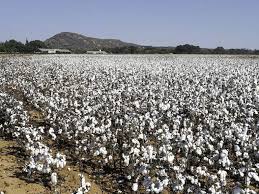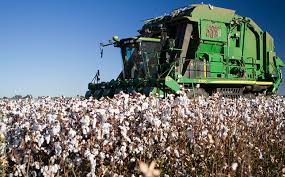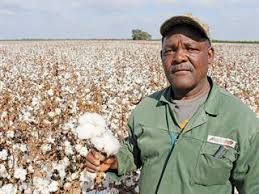How profitable is Cotton farming? – Although “cotton farming” still faces some competition from other summer crops, it is less challenging than in the past. Cotton has become a prominent crop for planting because of its hardiness and profitability. But, some challenges for the cotton industry include: crop rotation, insufficient seed availability, climate conditions, and unfavorable weather conditions.
Cotton Farming
The industry has about 250 commercial farmers and more than 2000 black small growers. South Africa’s cotton – growing areas are mainly located in:
- Limpopo.
- North West.
- Northern Cape.
- KZN and
- Mpumalanga.
“Cotton Farming” in South Africa forms part of the crop rotation practices for many farmers. But, not so commonly communicated, is that cotton can reduce the carbon footprint. Cotton has a better than neutral carbon footprint because the plant stores more carbon in its lint and seeds.


Cotton Production
In South Africa “cotton production” takes place under irrigation as well as in dryland conditions. Cotton SA (2019) has reported estimates showing that in the 2018/2019 season, 23324 ha of irrigated land were planted. This yielded 4694 kg/ha of seed cotton per ha and 19064 ha of dryland were cultivated that yielded 989 kg/ha of seed cotton. Yet, it is anticipated that the number of hectares under cotton production will increase to 100 000 ha over time. Covid 19 had definitely significant implications on the cotton sub sector. Due to the temporal ban of exports implemented in March 2020, the sector income was adversely affected.
Environmental Impact
In brief research shows that cotton gives back to nature in two main ways. First, far less less water is needed to grow cotton compared to water – thirsty sugarcane. Second, good land preparation before planting cotton seeds goes a long way to help open the soil. So, the long taproot of the cotton plant continues to loosen the soil further. Later, the nutrient – rich cotton leaves can be ploughed back into the soil after harvest and having “environmental impact”.
Weather Conditions
Cotton is able to withstand extreme drought and heat conditions. A cotton plant has an outstanding ability to extract moisture from the soil with ease. Therfore, making the crop especiallysuitable for dryland areas with deep soils. The cotton crop is well adapted to the warmer northern and western parts of South Africa. Summer temperatures of in excess of 25 degrees are ideal for cotton production, but prefarably not warmer than 38 degrees. Full sunshine for 70% – 90% of daylight hours is ideal, with little or no cloudy weather.
About Me

I help Agripreneurs in a variety of farming activities that also include professional farming plans and farming proposal writing services. Read More
Contact
Phone
Address
Website you Must Visit
Small Businesses and Agriculture play a vital role in building our economy, communities, and delivering the creativity that will move our country forward. The starting point to all of this is to develop a proper "Business Plan” that is necessary to show all interested parties – employees, investors, partners, and yourself – that you are committed to building your business. Creating your plan forces you to think it through and select strategies that will propel your growth.
Visit our website – www.premiumbusinessplans.co.za now for more details and professional help.

